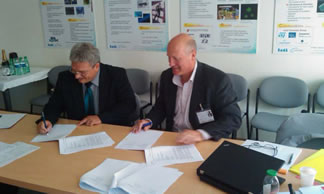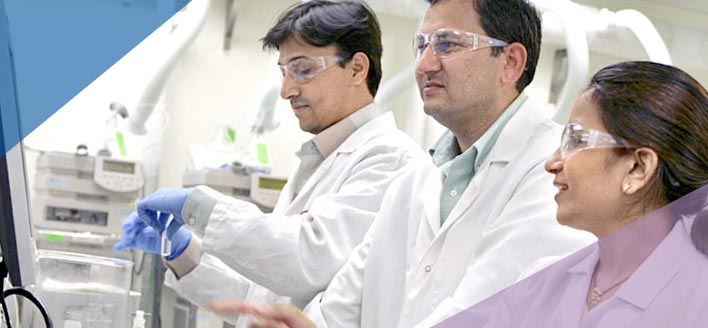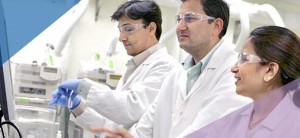Advanced Liquid Logic announced today that it has signed a license and collaboration agreement with the French research institute CEA-Leti. The agreement provides Advanced Liquid Logic with worldwide exclusive access to CEA’s portfolio of patents related to digital microfluidics.
Advanced Liquid Logic co-founder and Dr. Michael Pollack said, “This agreement puts our company in a clearly dominant position with respect to the intellectual property surrounding digital microfluidics.†Co-founder Dr. Vamsee Pamula added, “the accompanying collaboration with a very active and highly competent group of researchers will provide us with key technical resources to help address both today’s and tomorrow’s technology challenges.†Advanced Liquid Logic has set up a subsidiary company in Grenoble, France to help manage the collaboration and to provide an initial position to address market opportunities in Europe. CEA-Leti employee Dr. Cyril Delattre will join the company and manage Advanced Liquid Logic’s French subsidiary.
 “The combination of Advanced Liquid Logic’s intellectual property position and their readiness for market made them the ideal partner,†said Dr. Laurent Malier, CEO Leti. “We expect that our complementary skills, expertise and intellectual property will be very useful going forward. This partnership with Advanced Liquid Logic offers an industrial solution that will help us develop applications bases on microfluidics for many sectorsâ€.
“The combination of Advanced Liquid Logic’s intellectual property position and their readiness for market made them the ideal partner,†said Dr. Laurent Malier, CEO Leti. “We expect that our complementary skills, expertise and intellectual property will be very useful going forward. This partnership with Advanced Liquid Logic offers an industrial solution that will help us develop applications bases on microfluidics for many sectorsâ€.
Advanced Liquid Logic previously acquired intellectual property from Nanolytics and Core Microsolutions. The company now owns or controls over 45 issued patents related to their proprietary, electrowetting-based digital microfluidic technology.
About Advanced Liquid Logic
Advanced Liquid Logic, headquartered in Research Triangle Park, North Carolina, is commercializing its proprietary “Digital Microfluidics†technology in a spectrum of life sciences and clinical diagnostics applications. Digital microfluidics enables precise and flexible manipulation of microdroplets using electrical fields and therefore avoids the need for pumps, valves or microchannels required by competing technologies. For more information please visit http://www.liquid-logic.com/
About CEA-Leti
CEA is a French research and technology organization, with activities in four main areas: energy, information technologies, healthcare technologies and defence and security. Within CEA, the Laboratory for Electronics & Information Technology (CEA-Leti) works with companies in order to increase their competitiveness through technological innovation and transfers. CEA-Leti is focused on micro and nanotechnologies and their applications, from wireless devices and systems, to biology and healthcare or photonics. Nanoelectronics and microsystems (MEMS) are at the core of its activities. As a major player in MINATEC campus, CEA-Leti operates 8,000-m² state-of-the-art clean rooms, on 24/7 mode, on 200mm and 300mm wafer standards. With 1,400 employees, CEA-Leti trains more than 190 Ph.D. students and hosts 200 assignees from partner companies. Strongly committed to the creation of value for the industry, CEA-Leti puts a strong emphasis on intellectual property and owns more than 1,700 patent families.
Visit www.leti.fr.
Via EPR Network
More Biotech press releases
















